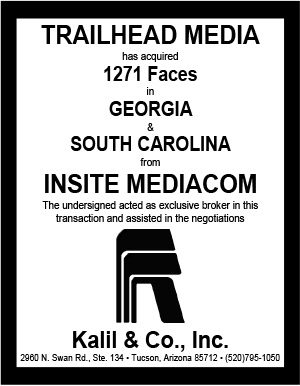
Good riddance to 2020, which will likely be remembered as the Year of Covid, along with the economic downturn, racial and social tensions, political upheaval, and other challenges sparked by the pandemic. Indeed, my first two legal predictions for the outdoor advertising industry in 2021 are also largely influenced by Covid, while not nearly so catastrophic. The third continues the judicial and legislative trend discussed in my last two annual prognostications.
More billboard lease litigation.
First, especially in the early days of Covid, the out of home industry suffered mightily, like the rest of the country’s economy. Faced with cancelled contracts and diminished revenues, many billboard companies faced hard decisions for remaining afloat. In order to cut costs to offset their reduced income, for example, many operators attempted to slash expenses, such as ground rents. Oftentimes, billboard lessees exercised force majeure clauses in their leases, hopefully securing reduced or deferred rent or other concessions from their lessors. Unfortunately, the older standard lease forms don’t expressly list pandemics as one of the excuses for such concessions, along with the laundry list of obstructed sign views, loss of governmental permits, diversion of the thoroughfares, and other calamities. And, to make matters worse, some companies exercised the clause and reduced the rent unilaterally, by simply notifying their lessors and without any mutual agreement to do so. Not surprisingly, many lessors objected, and our firm at least has seen a dramatic increase in litigation over billboard lease interpretation and performance. I’m sure we’ll be developing and trying a lot of these cases throughout 2021, along with recommending to our billboard lessee clients to revise their leases to expressly incorporate pandemics in their force majeure clauses.
Municipalities look for money from out of home.
Second, cities and other governmental entities have likewise suffered unprecedented economic hardship related to Covid. Municipalities’ sales and ad valorem taxes and other revenue sources are down, while their expenses for hospitalizations, housing, testing, contract tracing, and other public heath imperatives are up. This economic imbalance will inevitably lead to government action seeking new and increased revenue, some of which may actually benefit the billboard industry. For example, the City of Houston, which has historically prohibited digital displays on billboards, as well as any new static ones since 1980, has requested proposals for new digital billboards to be erected on City owned property. The successful bidder will be paying the City millions in upfront and monthly charges, in exchange for the City’s permission expected to be granted in 2021. Other municipal strategies to raise revenue will be vigorously opposed by the industry, such as taxes on billboards. Litigation with Baltimore and Cincinnati over their billboard taxes has been pending for years, and look for other cities to undertake similar schemes throughout 2021.
More first amendment legal challenges.
A third trend that can safely be predicted to continue throughout 2021 are the legal challenges under the First Amendment to content-based sign codes and state Highway Beautification Acts. Following the Supreme Court’s 2015 decision in Reed vs Town of Gilbert, the HBAs of Texas, Tennessee, and Kentucky, along with numerous municipal sign codes, have been constitutionally invalidated by federal and state courts across the country. Such litigation, along with the type of legislative fixes undertaken by the Legislatures in Texas, Tennessee, and Oregon, will undoubtedly continue in 2021. In addition, look for aggressive billboard operators to exploit these vulnerable sign regulations and to legally challenge them as a sword to achieve competitive advantages. In Reagan and Lamar vs City of Austin and Adams vs Town of Mount Pleasant, for example, the companies sought digital permits under the cities’ sign codes, which were content-based and permitted digital messages only for on-premise advertising. These and other cases will continue to expand successful legal strategies beyond mere defenses as a shield throughout 2021.
Happy New Year, Everybody!
[wpforms id=”9787″]
Paid Advertisement


















In what states is advertising revenue subject to sales taxes?